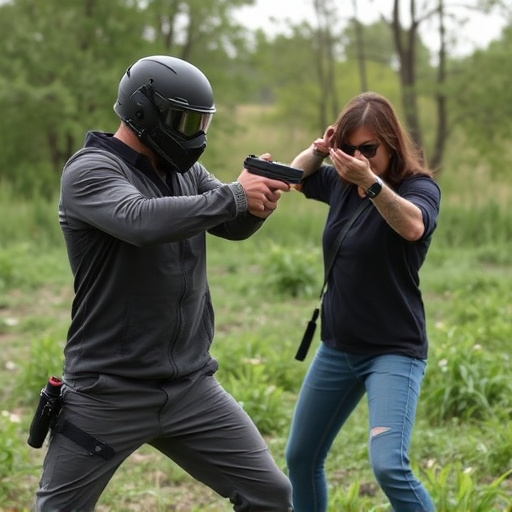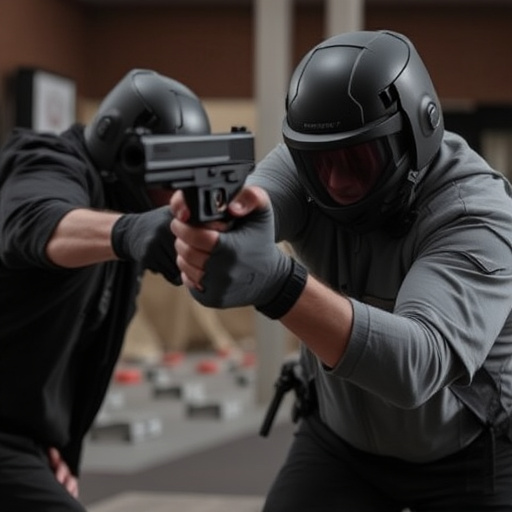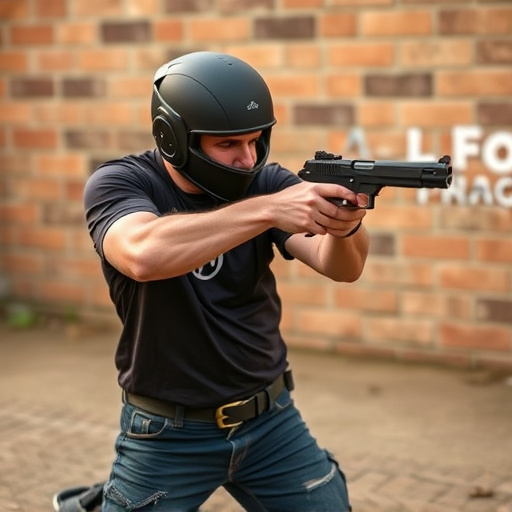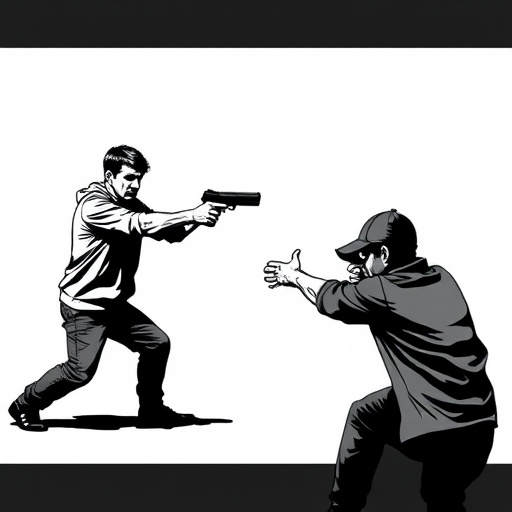Tasers and stun guns serve distinct self-defense purposes, differing in operational mechanics and applications. Tasers fire two probes to disrupt muscles from a distance, while stun guns emit high-voltage pulses through direct contact points. Compact stun guns, easily concealed in everyday items like purses, offer immediate personal safety solutions for mobility. These devices cater to diverse needs, with models tailored for discreet carry, ensuring accessibility and peace of mind without drawing attention. Legal considerations vary globally, affecting accessibility; users must navigate local regulations regarding weapon possession to avoid legal repercussions. When choosing between them, consider deployment ease, range, and power for effective self-protection.
“In today’s world, personal safety is a top concern. Tasers and stun guns have emerged as popular self-defense tools, but understanding their distinct differences is crucial before making a choice. This article offers an in-depth look at taser vs stun gun to help you navigate these options effectively. From basic mechanics and design variations to legal considerations and compact purse-sized options like compact stun guns, we explore the pros, cons, and features that matter. By the end, you’ll be equipped with knowledge to select the right self-defense tool for your needs.”
- Understanding Tasers and Stun Guns: A Basic Overview
- Key Differences in Design and Mechanism
- Compact Stun Guns: Purse-Sized Self-Defense Options
- Pros and Cons of Each for Personal Safety
- Legal Considerations: Where Can You Use Them?
- Choosing the Right Self-Defense Tool: Taser vs Stun Gun
Understanding Tasers and Stun Guns: A Basic Overview

Tasers and stun guns are both non-lethal weapons designed to temporarily incapacitate a target through electrical disruption, but they function differently and serve distinct purposes. Tasers, formally known as Conducted Electrical Weapons (CEWs), fire two small probes connected to cables that deliver an electric current, causing muscle contractions in the target’s body, leading to temporary paralysis and disorientation. This makes tasers effective for law enforcement and self-defense scenarios, offering a less lethal alternative to firearms.
Stun guns, on the other hand, emit a high-voltage, low-current electrical discharge from their contacts, causing intense pain and muscle spasms upon contact or when held against the target’s body. These devices are typically designed for personal protection and are often more compact, making them easily concealable in items like keychains, flashlights, or purses. Compact stun guns for purse carry have gained popularity due to their ease of use and the added layer of security they provide for individuals facing potential threats while on-the-go.
Key Differences in Design and Mechanism

When comparing Tasers and stun guns, one of the most notable differences lies in their design and mechanism. Tasers, short for Tactical Electronic Gun, are designed as handheld devices that fire two thin probes connected to high-voltage electrical circuitry. Upon impact, these probes deliver a powerful electrical pulse, temporarily incapacitating the target. The design often includes a trigger mechanism similar to a handgun, making it intuitive for users to operate in stressful situations.
In contrast, stun guns (or electroshock weapons) typically resemble traditional firearms but with a compact size, making them ideal for discreet carry, especially in purses or hidden on persons, thanks to their small stature. Unlike Tasers, stun guns do not fire projectiles but rather use high-voltage electrical current delivered through contact points on the device’s surface. This direct contact design can be more effective in certain scenarios, ensuring a precise and immediate response during self-defense situations, particularly when mobility is crucial, such as with compact stun guns for purse carry.
Compact Stun Guns: Purse-Sized Self-Defense Options

Compact stun guns, often in purse-sized formats, offer an attractive option for personal self-defense. These devices are designed to be easily concealed and accessible, making them a popular choice for those seeking peace of mind while adding a layer of protection. Their small size allows for discreet carry in purses, wallets, or even pockets, ensuring users can defend themselves without drawing unnecessary attention.
These stun guns typically pack a powerful punch in a lightweight package, delivering a strong electrical shock that can incapacitate an assailant temporarily. The compact design doesn’t compromise on performance, providing users with the confidence to handle potential threats effectively. With various styles and features available, prospective buyers can choose models suited to their needs, ensuring they have a reliable tool for personal safety while on-the-go.
Pros and Cons of Each for Personal Safety

When it comes to personal safety, both Tasers and stun guns offer unique advantages and drawbacks. One significant difference lies in their effectiveness range. Stun guns typically have a shorter range, usually around 2-3 meters, while Tasers can incapacitate targets from a distance of up to 15 meters, making them more versatile for self-defense scenarios where quick reaction time is crucial.
In terms of power and impact, stun guns deliver a high-voltage electric shock that disrupts muscle control, causing the target to drop and become temporarily immobilized. On the other hand, Tasers fire small probes connected to the main unit, delivering an electrical pulse that interrupts the body’s nervous system. This method can be more reliable in situations where the target is wearing protective gear or has a higher pain threshold. However, both devices have drawbacks; stun guns may not always register a hit, especially in close-quarters combat, while Tasers have been known to cause temporary muscle paralysis, which could potentially lead to falls and injuries if not used properly. Their power also means they should be used cautiously to avoid causing harm to bystanders or the target recovering too quickly.
Legal Considerations: Where Can You Use Them?

The legality of stun guns and Tasers varies greatly across different countries and states, reflecting complex societal perspectives on personal defense and law enforcement tools. While stun guns are generally considered more accessible to civilians for self-defense purposes, Tasers often require specific training and authorization from law enforcement agencies or limited use by private citizens under certain conditions.
One notable aspect of legal considerations involves compact stun guns designed for purse carry. These devices offer a discreet way for individuals to protect themselves in potentially threatening situations. However, their usage is subject to local laws regarding weapon possession. Some jurisdictions allow them as personal protection tools while others restrict or prohibit their carriage, emphasizing the importance for users to thoroughly understand and comply with local regulations to avoid legal repercussions.
Choosing the Right Self-Defense Tool: Taser vs Stun Gun

When it comes to self-defense, choosing the right tool is essential. Both tasers and stun guns offer effective protection, but they differ in key aspects that can influence your decision. Tasers fire small probes that deliver a powerful electrical shock, temporarily paralyzing the target. They are ideal for maintaining distance and allowing time to escape. On the other hand, stun guns use high-voltage electricity to disrupt muscle control, rendering the aggressor immobile for several seconds.
Compact stun guns designed for purse carry are particularly appealing due to their size and ease of use. These devices offer a discreet yet potent option for personal safety, especially in situations where drawing a larger weapon might be impractical or risky. Factors like ease of deployment, range, and power should guide your selection, ensuring you have the confidence to protect yourself effectively.
When it comes to personal safety, both Tasers and stun guns offer effective non-lethal force options. Understanding their distinct differences is key to making an informed choice. While Tasers use electrical current to disrupt muscle control, stun guns employ high-voltage, low-amperage shocks. Compact stun guns, especially purse-sized options, provide discreet self-defense for women and individuals seeking non-lethal force. Considering legal restrictions and individual needs, choosing between a Taser or stun gun depends on specific circumstances. For those looking to enhance their personal safety without drawing attention, compact stun guns for purse carry offer a convenient solution.
